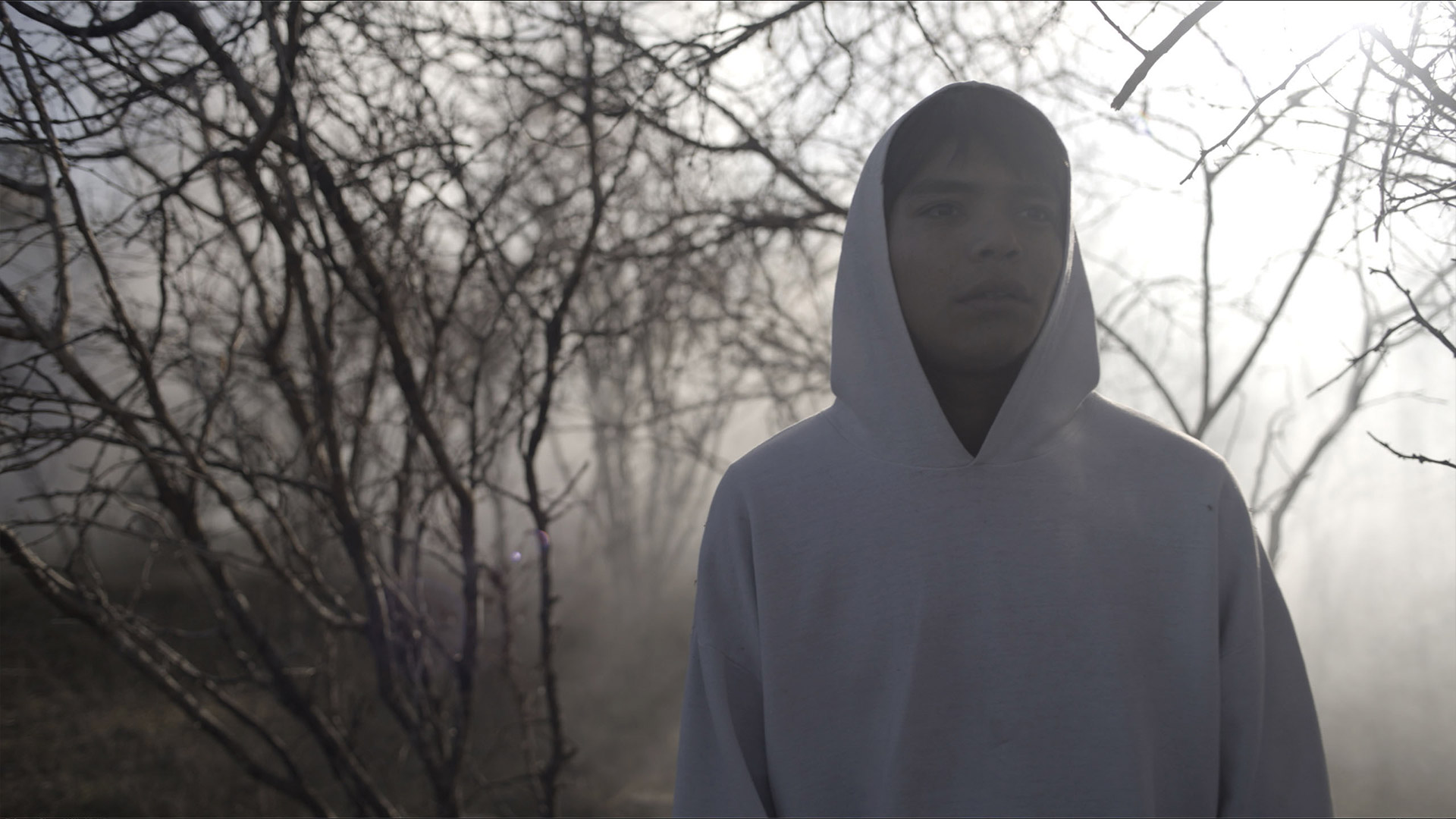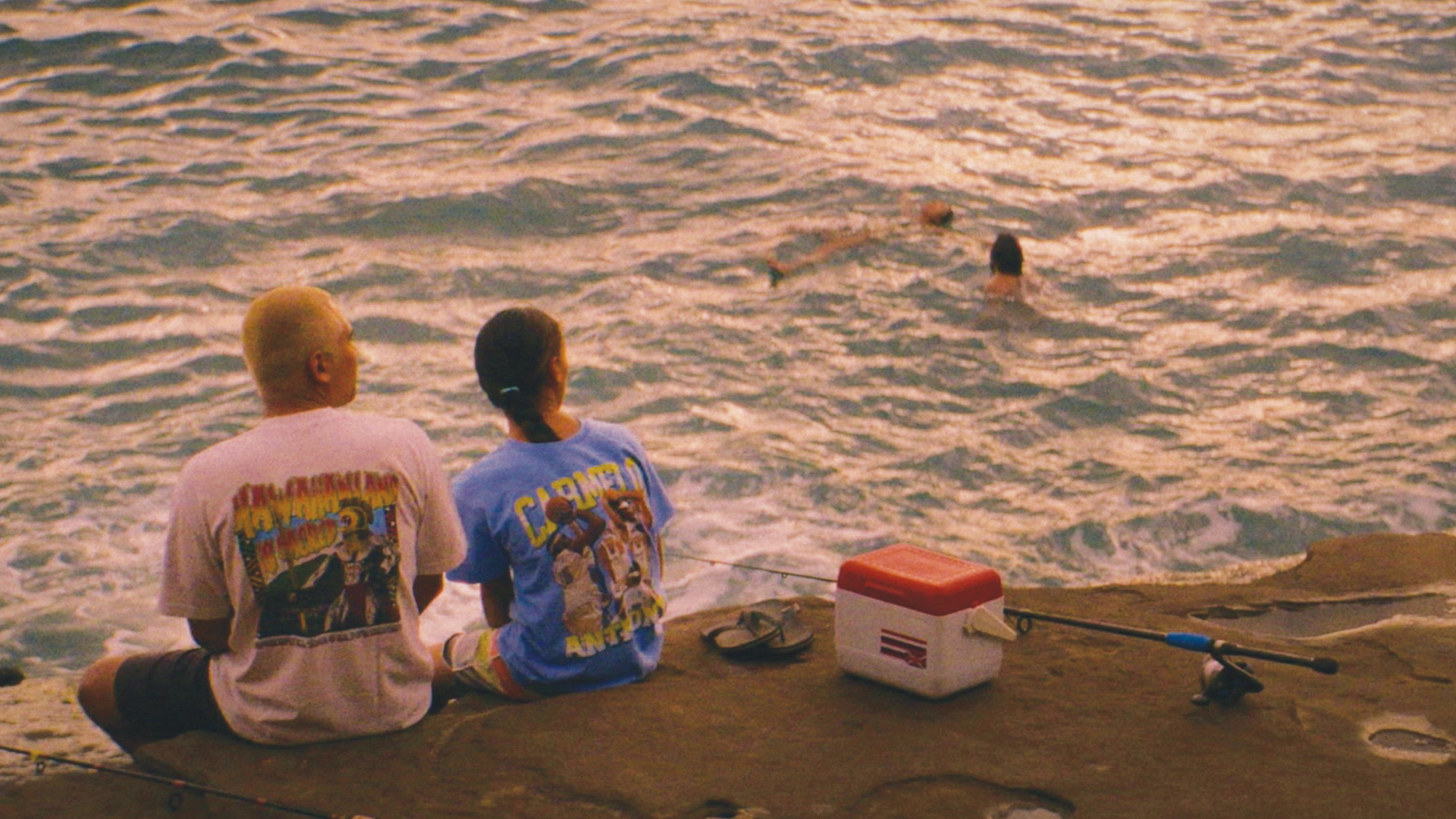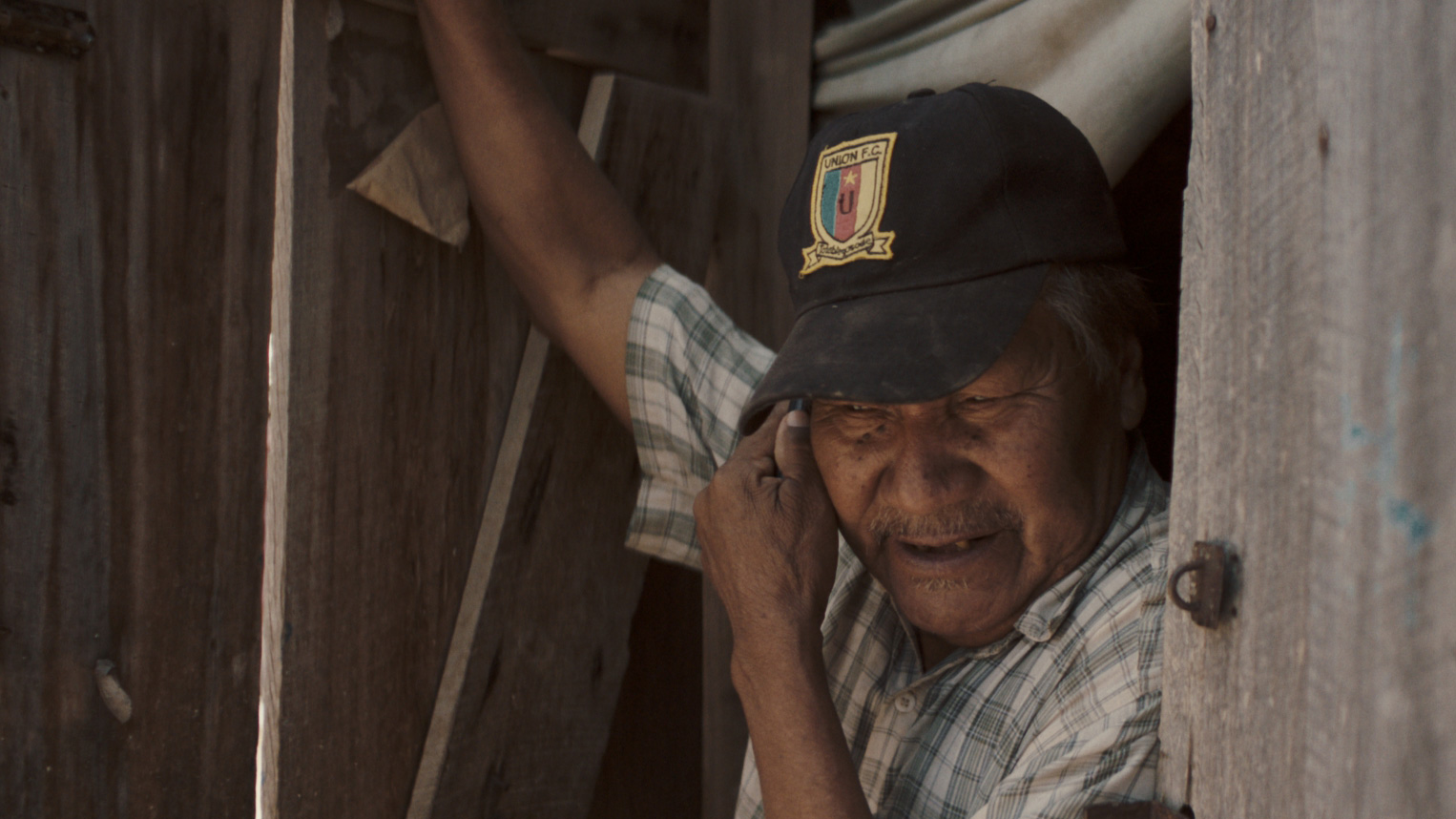
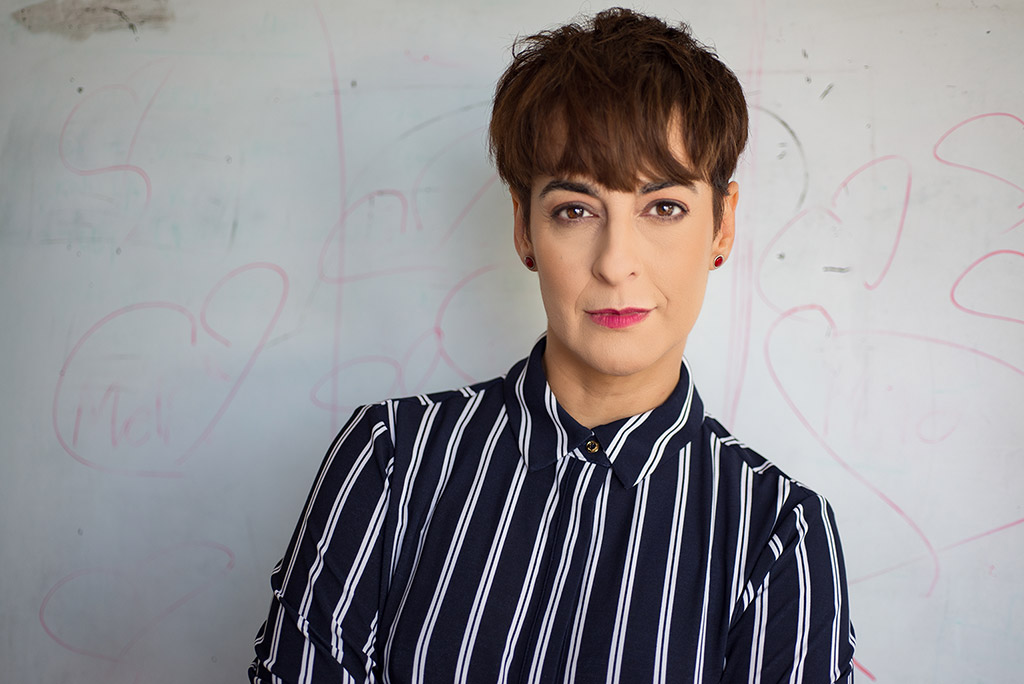
Arami Ullón – photo by Martín Crespo
Repurposing Media for Cultural Preservation
Ullón cites the genesis of her film as an article in a Swiss newspaper, which brought her into contact with a Swiss anthropologist living in Paraguay. “He had been living in Paraguay for over 40 years now, and he was fighting for the Ayoreo’s rights at that time, about eight years ago,” she says. “He offered to introduce me to the community, and then we did our first trip to the Chaco region, and we went to Campo Loro, that is where Mateo lives. From then on [Mateo and I] started a very long process of getting to know each other, and trusting each other.”
As part of that process, Mateo showed Ullón his vast collection of tapes. “When the missionaries arrived in the late ’60s, it was common to bring recorders and tapes to the missions to record Bible verses or teachings in the language of the Indigenous people,” explains Ullón. “Mateo was actually helping the missionaries in that task, until one day he realized that all this was erasing the Ayoreo heritage and culture and he decided to turn this tool into his own, and started recording Ayoreo songs and Ayoreo stories.”
This complicated background as both convert and de-convert, apologist and critic, seems to color Mateo’s approach to tricky conversations. After asking his subjects if they would choose to return to the forest, he listens intently and leads them through the implications of their thinking. Close shots of Mateo fingering his collar, pensively drawing his hand over his chin, or nodding slightly reveal an ever-whirring mind.
Yet his own history remains a cipher until the ending of the film. An exchange with José, the man who persuaded Mateo to leave the forest, crescendos with Mateo acknowledging his own deep-seated trauma. “Don’t think I’m angry at you, but don’t you think it’s brutal that their diseases killed us when they contacted us?” he asks. Nothing But the Sun expertly builds momentum leading to this moment of catharsis. In other moments, Mateo wonders at the entrenchment of the missionaries’ worldview in his community. One speaker at the church rhapsodizes about the power of God to cure disease and drought. In this formulation, the missionaries both cause the devastation and promise its solution. Through probing questions, Mateo unravels this irony.
While acknowledging the variety of reasons behind why some Ayoreos choose to convert, Ullón points to the primacy of exploitation. “But mainly we can say that they don’t really have much choice, because the missionaries are also very powerful economically,” she says. “They are the same people who are cattle ranching, and the Ayoreos are finding their way of living working for them. Even if some of them are not real believers today, maybe they would say they are, because this will make their lives much easier… I just imagine that if I can no longer practice anything that has to do with my culture, this sense of losing meaning is very strong.”
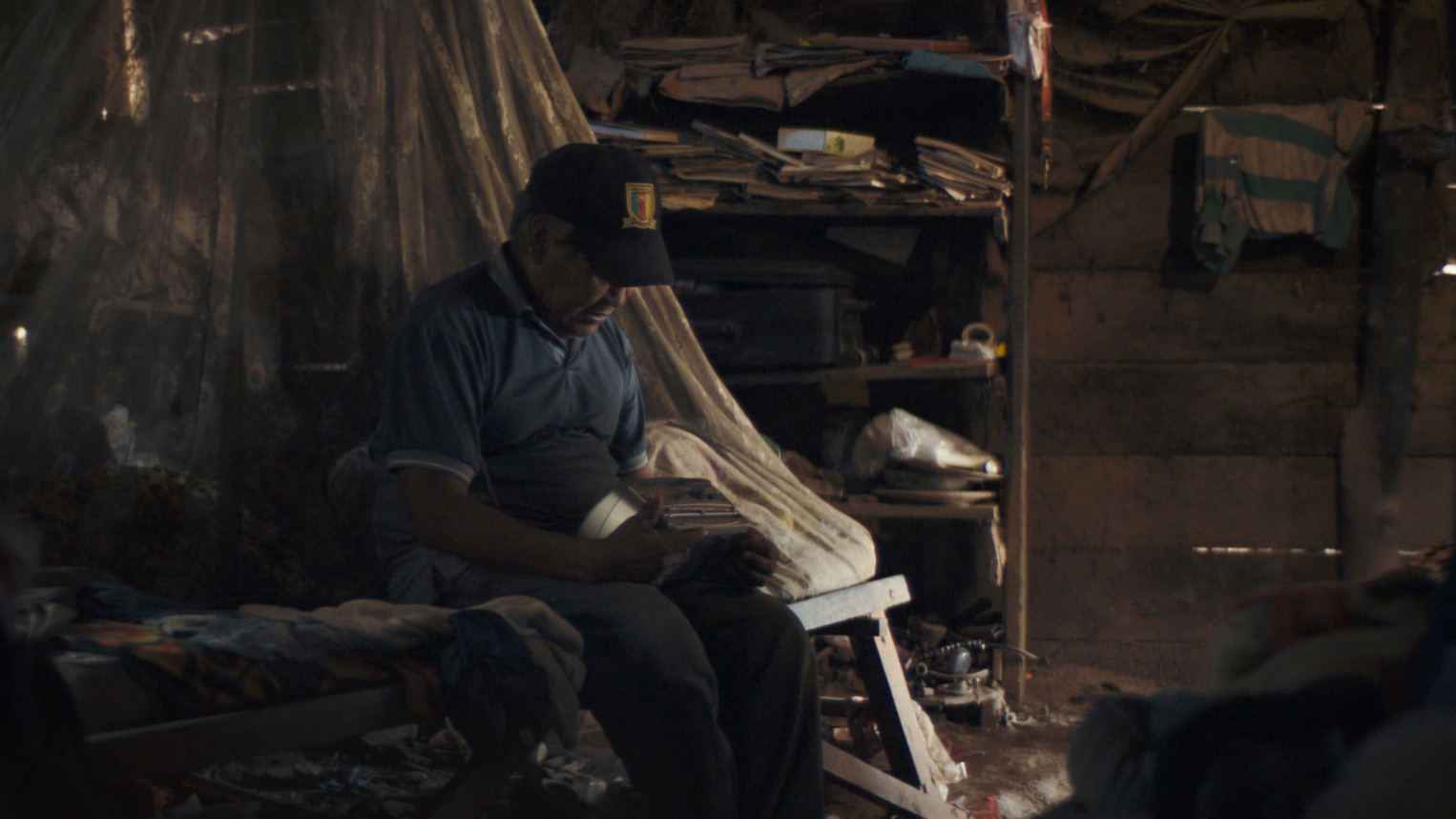

Making the Invisible Visible
Indeed, Nothing But the Sun makes this cultural loss visible. Even Mateo’s own grandchildren mistake his Ayoreo songs for Bible verses. It feels poignant, then, to witness a shaman sing of how a spirit in the form of a snake warned of an impending attack before transforming into smoke. She lost those visions, and perhaps also that raucous spirit of communion with “nature’s creatures,” when she converted to Christianity at the behest of her daughters. As she notes, “My daughters didn’t want us to have enemies.”
Capturing these intimate moments involved a lot of work behind the scenes. “It was a complex situation because we needed to follow a lot of instructions in order to be there,” says Ullón. “They told us not to be in the direction where wind was blowing, so we needed to check exactly from where the wind was coming. And we needed to be a certain distance to the place where Mateo and the shaman were going to be, so we needed to use special lenses to be a bit closer with the image. These are just things that you actually have to do because it is very important for them, and if you are not respecting it then you’re just doing the same as the missionaries do.”
Ullón strikingly juxtaposes this clandestine spiritual practice with the heavy-handed apparatus of the church. In the haziness of dusk, preaching over loudspeaker mixes with the dissonant hums of insects, creating a claustrophobic atmosphere. During a sweltering Sunday service, some parishioners fan themselves or hand out water while others hunch over, lost in prayer or possibly passed out. But filming this scene was also a challenge. Even after Ullón team secured a permit, the church leaders only allowed them to shoot one hour-long service.
Nothing But the Sun smartly breaks up Mateo’s conversations with immersive scenes like this that viscerally capture his community’s plight. In another such scene, a rustling crowd of Ayoreo collect their government benefit, which amounts to $65 per family every two months, as police officers and soldiers stand by with their hands poised on assault rifles.
For Ullón, seeing a group treated as freeloaders by the people occupying their land was an indignity almost too much to bear. “This was very shocking,” she says. “There is this belief that [the Ayoreo] are dangerous, and that they need to be protected and that they need to protect this money. It’s a very strange perspective of how to approach this community. I talked to a couple of police officers, and they didn’t know that this community was called Campo Lorro, and they also didn’t know that these people were Ayoreo.”
Moreover, she characterizes this ignorance as indicative of a broader malady in Paraguayan society. “We [Paraguyans] are very ignorant, not only about the Ayoreo but all the other Indigenous groups apart from the Guaraníes. It will help much more, the more we know about them, the more spaces they have to talk and to present their problems, which actually they don’t have at all. Because there is no Ayoreo in any position in any department of the Paraguayan government. Nothing, zero. So they really don’t have any means to be heard or to actually make a change,” she says.
Ullón’s film, which presents a chorus of Ayoreo voices anchored by Mateo’s magnetic presence, is helping to create that space. At once political and poetic, urgent and intimate, Nothing But the Sun uses an array of visual metaphors to illuminate injustice. A sequence of imposing fences serves as a potent symbol. “The Chaco region is a huge territory,” says Ullón. “I mean we are maybe talking about seven times the size of Switzerland, and it’s all private property. The Ayoreos cannot enter anywhere anymore because they are treated as trespassers. Invaders, actually, in their own territory.” It is a particularly devastating irony that while the Ayoreo used to worship the sun from the lofty heights of trees, now the only trees left are cordoned off.
Nothing But the Sun (Apenas el Sol) Film Trailer
More on the Plight of the Ayoreo & Forests of the Gran Chaco Region
Deforestation of Paraguay’s Gran Chaco region has accelerated in recent decades, particularly as global demand for beef grows. Since 1985, a fifth of the forest has been lost as a result of bulldozing and burning. Ash-streaked skies and palm trees blackened by smoke are now a common sight. Ayoreos’ way of life, which involves hunting and foraging for honey, roots, and medicinal plants, is in danger. Mennonite settlements have become boomtowns complete with their own rodeos, while many Ayoreos live in poverty on their outskirts. Meanwhile, scores of “Brasiguayos,” or Brazilian-Paraguayans, have grown rich off ranching, deepening the divide between indigenous and non-indigenous Paraguayans.
It’s a problem that implicates multinational companies. According to the NGO Earthsight’s 2020 report, two-thirds of Paraguay’s yearly exports of wet blue leather end up in Europe, often to be used by luxury car brands. Beyond cattle, soy grown in the Gran Chaco also ends up all around the world. In the tangled web of global supply chains, trading companies buy soy from South America, then sell it to European livestock companies that deceptively mark their meat as “locally grown.” The non-profit Mighty Earth noted in 2018 that this soy is grown with pesticides and fertilizers that contaminate the local water supply and have been linked to birth defects.
Facing the scourge of drought, hunger, illness, and poverty resulting from scorched-earth agriculture, Ayoreo have been fighting to reclaim legal ownership of their territory. In 2010, 23 families were able to settle in the territory of Cuyabia with the help of NGOs. As the Iniciativa Amotocodie, a Paraguayan environmental group, discovered, “In Cuyabia, we saw how people recovered. They put on weight, they suffered fewer illnesses, they regained their sight and began to have shamanic visions again.”
Yet backsliding has occurred, too, and in 2012, the government body INDI, which is supposed to safeguard indigenous rights, sold Cuyabia to ranchers. In the years since, Paraguay’s government has continuously overrode Ayoreos’ objections to development projects. Particularly concerning is the much-vaunted “Bioceanic Corridor,” which is meant to facilitate trade between Asian markets and South American farmers. When completed in 2024, it will connect a bridge between Paraguay and Brazil with a highway spanning 340 miles of the Gran Chaco. The project encroaches upon both legally protected Ayoreo reserves and an unknown number of Ayoreo who strive to live a traditional lifestyle without interference. Although the highway is only half finished, Ayoreo have already died in car crashes and by drowning in the road’s ditches. Even more galling, Brazilian ranchers are reportedly paying security guards to shoot at foraging Ayoreo.
Mateo’s words should serve as a warning to the Paraguayan government: “The Bioceanic road brings a lot of danger for the Ayoreo.”
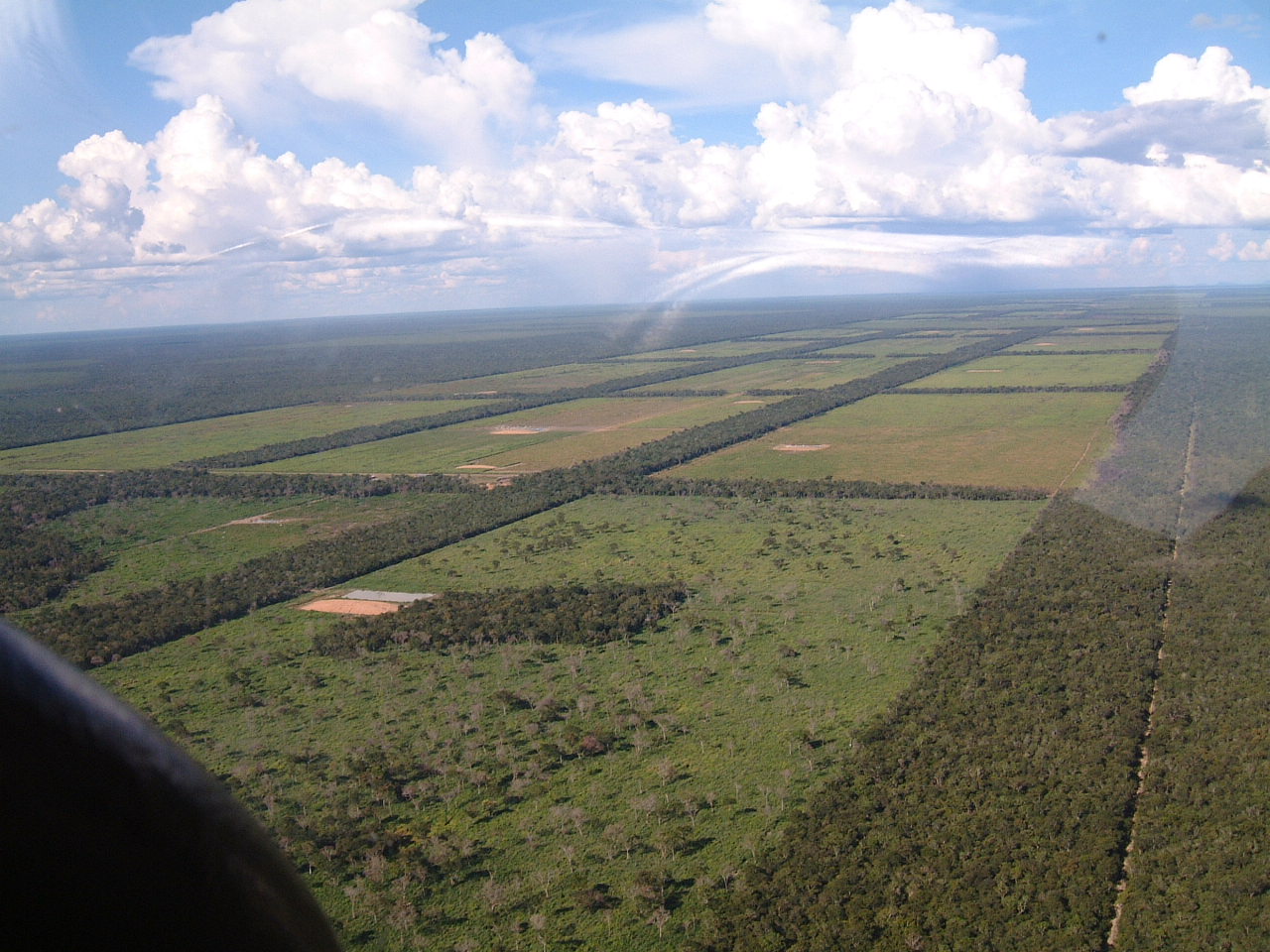
Cleared land for cattle grazing in Paraguay’s Gran Chaco region. Photo credit: Peer V – Own work, CC BY-SA 3.0
Ω



